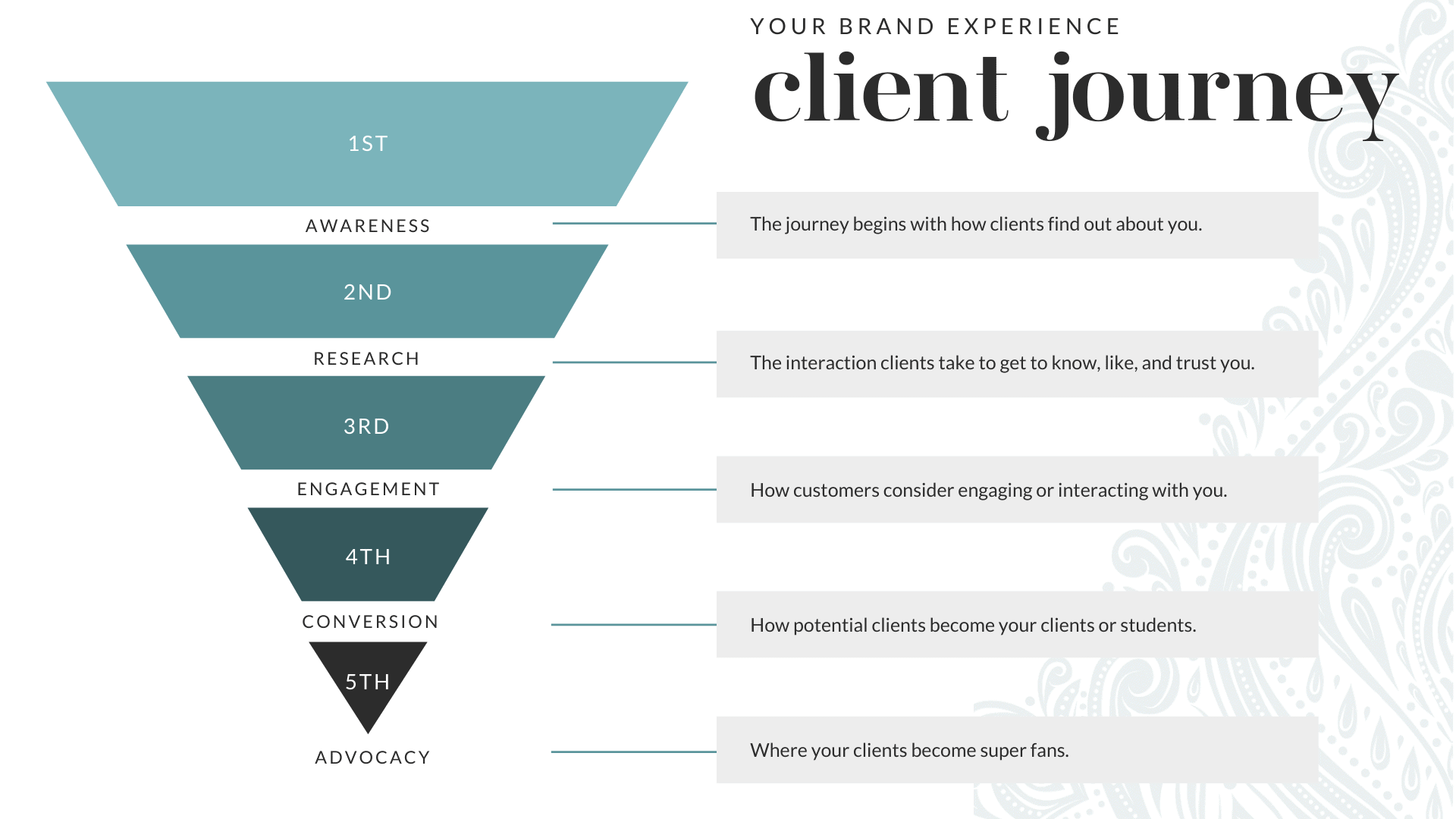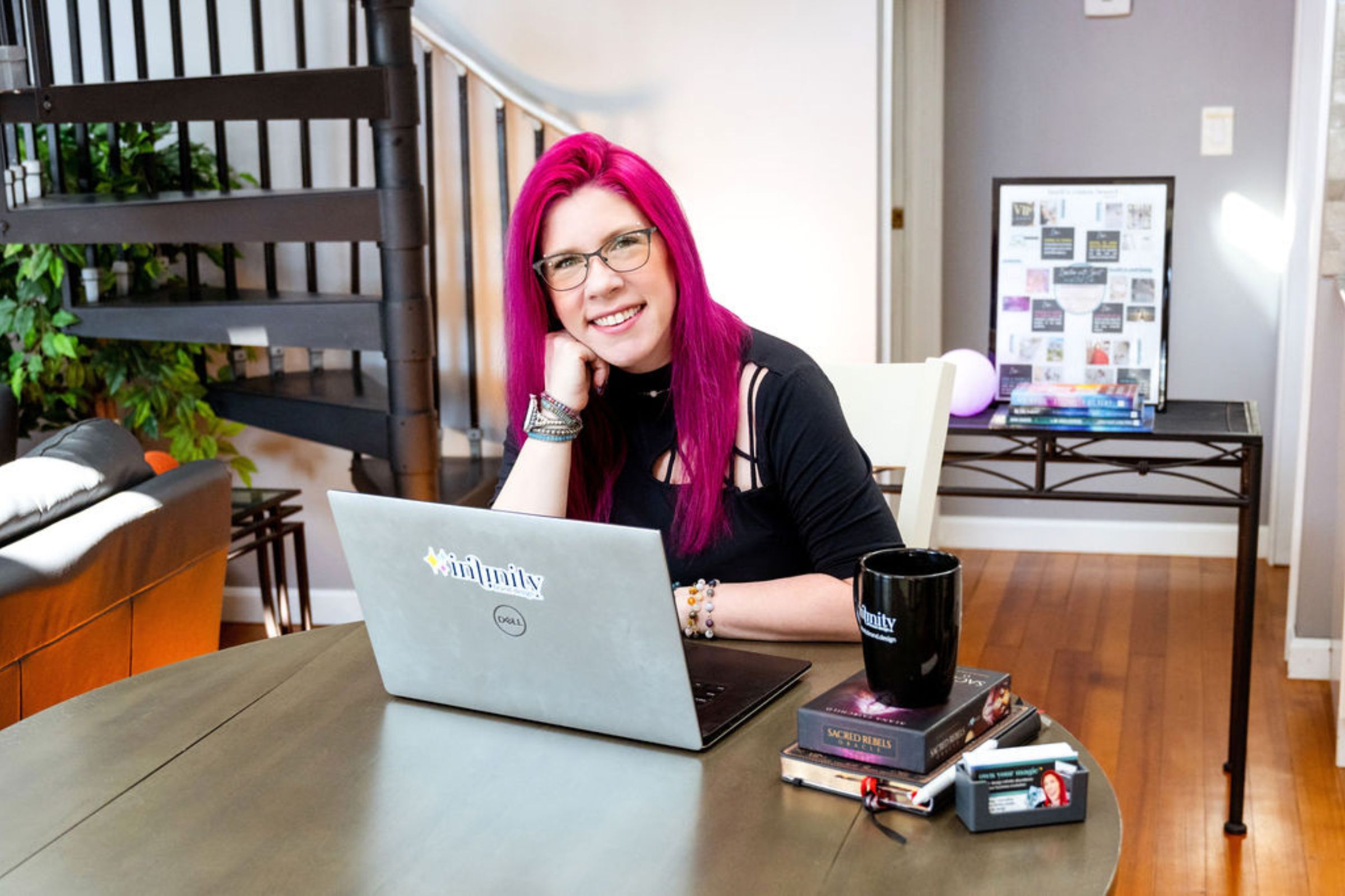A website is one of the most lucrative investments you can make in your heart-centered business. I like to think of the website as the world’s best employee for your business. It’s available around the clock to answer questions, it helps potential clients and students find the info they need, your website always looks the part and represents your business perfectly. Your site works as the best PR manager money could ever hire. It attracts and vets your ideal client for you and makes it super easy for clients to book your services and purchase your courses or products. Essentially, your website makes you money on autopilot. But before you even get to the design of your new website, there are important questions that need to be asked.
I’ve seen many DIY attempts at websites that started with “I liked the design”. I get it, I do. Pretty is awesome. However, as a User Experience Designer with over two decades of experience, starting with the design of your website is effectively throwing spaghetti at the wall to see what sticks. Your purpse-driven business needs a sound strategy to implement to get you to those big, lofty goals. Starting with strategy can not only get you to pretty, it will get you to profit. So let’s get strategizing… and answer the following questions:
Why do you need a new website?
Having a strategy in place before you embark on your new website can prevent wasting thousands of dollars replicating an existing website and making the same mistakes. Take a look at this previous blog post to provide insight to why you need a new website . Open up a Google doc or grab a pen and paper. We’re going to be making some lists to assess the state of the land before you even consider spending a dime on your website redesign.
1. What is your goal?
What goal do you want to accomplish with the new website? What do you want your new website to do? Quite frequently there are multiple targets. And that’s OK. List out the goals you want your website to achieve:
- grow your email list (get leads)
- book your services and or sell your courses / products (convert sales)
- boost your ranking on search engines
- Trying to get your name out there (increase brand recognition)
After you’ve defined your goals, the next thing is to prioritize them. Choose the primary goal you’re after and then list the others below that in order of importance. What will be the most impactful goal overall for your business? This will take precedence over all the others.
2. Who is your ideal client?
I’ve found that identifying one person achieves the best results here. Think back to your absolute, most favorite client. The one person that you enjoyed working with the most. Close your eyes and picture her and answer the following questions:
- What type of personality does she have?
- What kind of content does she engage with?
- What social media platforms is she on regularly?
- Does she do her research primarily on her phone or her laptop/desktop?
- What are goals?
- What does she dream of?
- What does she struggle with?
- What does she type into Google to search for solutions to her problem that she thinks your offers can help her with?
Now I realize this may appear like a lot. These questions are essential to understanding and developing empathy for your ideal client. This information is mission critical to creating your messaging, the visuals, and planning every interaction your ideal client has with your business. As a user experience designer, empathy is my most used tool in my toolkit. I’ve learned that empathy is the key to a successful brand experience at every touchpoint.
If you don’t have the answers to these questions, call up your favorite client and ask her. There is nothing more revealing than holding customer conversations to ensure that you truly understand your client’s needs. I like to hold customer conversations twice a year to make sure that I’m on the same page with my clients and fully understand their struggles, goals, needs, and desires. Doing so helps me to better serve them.
If you don’t have any previous clients that fit the description, go find her. I know that sounds easier said than done oh, but it is possible. 1 tried and true way to do this is to go into Facebook groups that you know your ideal client lives in. Personally, I found the best way to do this is to introduce yourself, and identify the elements of my ideal client that I’m looking for.
For example: “I’m a fitness and health coach and would love to talk to 3-5 women who are in their 50’s and struggle with weight loss. I’d like to better understand what roadblocks you’ve encountered that hold you back from achieving the weight goals you have and living your best version of yourself.” Let them know how long the conversation will last and that it is a completely pitch-free conversation. Bonus points if you can provide some quick tips on how to overcome their diet issues and if you offer a $5 gift card so that their next coffee is on you.
3. How do your clients find you?
Let’s talk about the client journey in your brand experience. What steps do potential clients take to learn about you? how do they become a client of yours? Pro tip: we’re talking about yourself funnel. No need to cringe, I’ll make this simple and provide examples.

The first interaction: Awareness
The journey begins with how clients find out about you. Think of all the ways that you create awareness, how clients find you. List these out. Most common forms of initial brand awareness is through:
- social media
- ads
- YouTube videos
- blog posts
- search engine result
- mailer/brochure
The second phase: Research
This is the interaction clients take to get to know like and trust you. These are the places that you show up the most and offer the most value. The most common forms of research your clients utilize are as follows:
- website
- social media bio
- YouTube
The third phase: Engagement
When potential clients decide that you can indeed solve their problem, how do customers consider engaging or interacting with you? List these out.
- click on an ad
- like, comment on, or share your social media post or video
- download your freebie (lead magnet) to join your email list
- book a discovery call
The fourth phase: Conversion
This is the fourth phase in a sales funnel. How do potential clients become your clients or students?
- book your services
- join your group program
- buy your online course
- purchase a digital or physical product
The final phase: Advocacy
While this is one of the smaller phases when you’re looking at the physical funnel, this is a very important phase. Unfortunately, many businesses overlook customer advocacy. This is where your clients become super fans. And who wouldn’t want people screaming from the mountain tops about how awesome it is to work with you? What does the advocacy portion of the funnel look like?
- Superfans refer people to you that they know within their sphere of influence
- You become top of mind to solve their pain points and ease their struggles for them
How’s your messaging?
Say what? Stop. Audit time. (queue MC Hammer)
So now that we’ve established your client journey and what your sales funnel looks like, let’s go back and take a look at your existing website and your awareness channels (how clients find out about you). Take a look at the messaging, the voice, the tone, and visuals on each.
- Is it consistent?
- Does your messaging align with the goals you’re looking to achieve for your website and business?
It’s important to keep in mind that creating a new website impacts your visuals and messaging across all your brand touchpoints or business channels that you listed out previously in the awareness exercise.
Having each of these steps mapped out before you begin to consider the design of your new website equips you with a sound strategy and game plan. This informs what your visuals and messaging need to look and sound like from everything on your website, to your social media presence, and even your freebies and email campaigns. If you take these action steps, you’ll have the necessary definition that maps out where you’re going, what steps you need to take to get there, and how success is measured for your new website. And, you’ll be prepped for an epic, excellent client experience and content strategy primed to wow your clients from the moment they learn about you.



